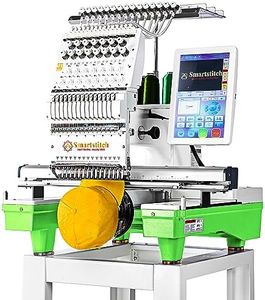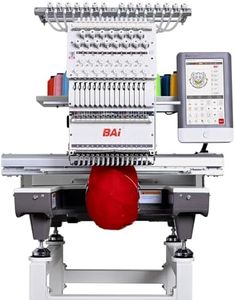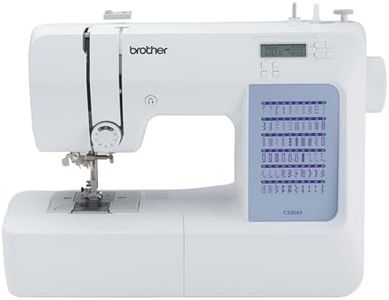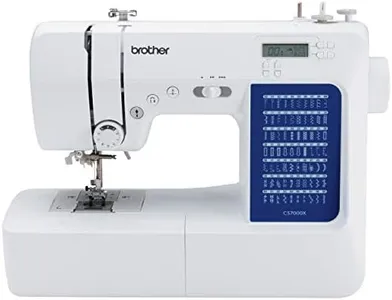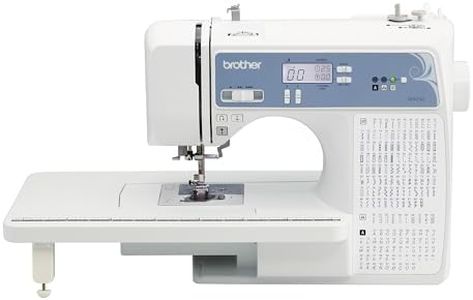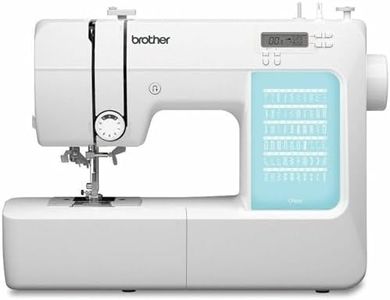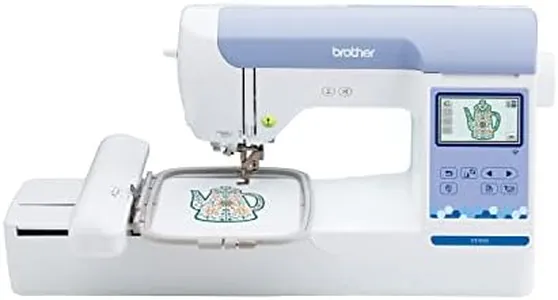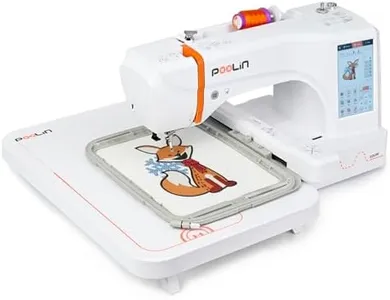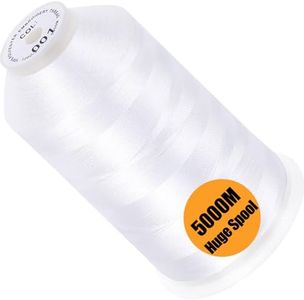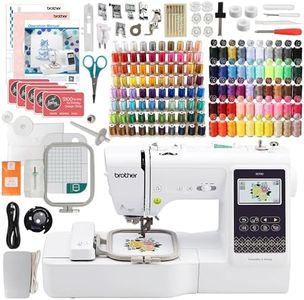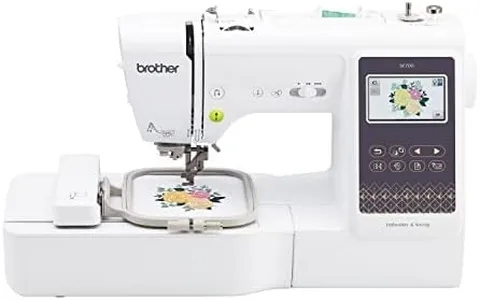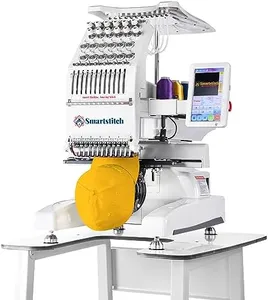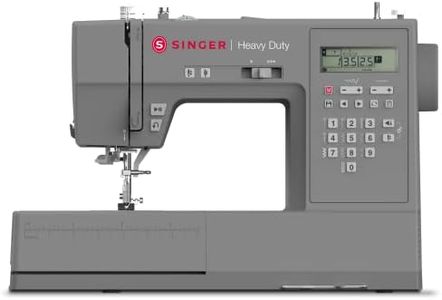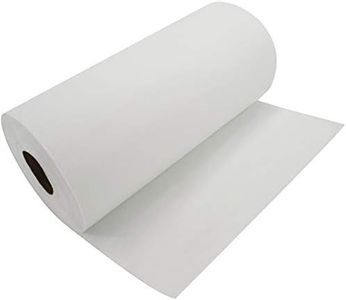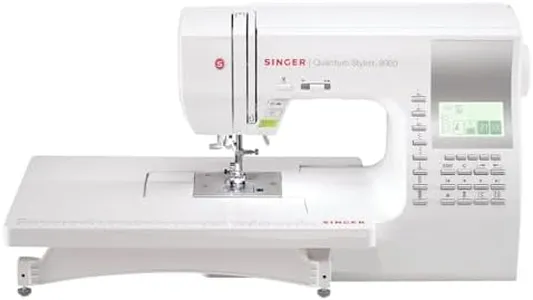We Use CookiesWe use cookies to enhance the security, performance,
functionality and for analytical and promotional activities. By continuing to browse this site you
are agreeing to our privacy policy
10 Best Embroidery Only Machine 2025 in the United States
How do we rank products for you?
Our technology thoroughly searches through the online shopping world, reviewing hundreds of sites. We then process and analyze this information, updating in real-time to bring you the latest top-rated products. This way, you always get the best and most current options available.

Buying Guide for the Best Embroidery Only Machine
Choosing the right embroidery-only machine can be a rewarding experience if you know what to look for. Embroidery machines are specialized devices designed to create intricate patterns and designs on fabric. When selecting an embroidery-only machine, it's important to consider your specific needs, such as the types of projects you plan to work on, your skill level, and the features that will make your embroidery experience enjoyable and efficient. Here are some key specifications to consider when choosing an embroidery-only machine.Embroidery AreaThe embroidery area is the maximum size of the design that the machine can stitch in one go. This is important because it determines the scale of the projects you can undertake. Smaller embroidery areas (around 4x4 inches) are suitable for beginners and small projects like monograms and patches. Medium-sized areas (5x7 inches) offer more flexibility for larger designs and are great for intermediate users. Larger areas (8x12 inches or more) are ideal for advanced users who want to create large, intricate designs on items like quilts and jackets. Choose an embroidery area that matches the scale of your typical projects.
Built-in DesignsBuilt-in designs are pre-loaded patterns that come with the machine. These designs can save you time and provide inspiration for your projects. Machines with a larger number of built-in designs offer more variety and are great for users who want to start embroidering right away without creating their own designs. If you prefer to create custom designs, the number of built-in designs may be less important. Consider your preference for ready-made designs versus custom creations when evaluating this feature.
ConnectivityConnectivity refers to the machine's ability to connect to a computer or the internet to import new designs. This is important for users who want to expand their design library beyond the built-in options. USB connectivity allows you to transfer designs from your computer to the machine easily. Some advanced machines offer Wi-Fi connectivity, enabling you to download designs directly from the internet. If you plan to use a wide variety of designs or create your own, look for a machine with good connectivity options.
Display ScreenThe display screen on an embroidery machine allows you to view and edit designs before stitching. A larger, high-resolution screen makes it easier to see details and make adjustments. Touchscreens offer more intuitive control and are user-friendly. Basic machines may have smaller, monochrome screens, which can be sufficient for simple designs. If you value ease of use and the ability to make detailed edits, opt for a machine with a larger, color touchscreen.
Hoop SizesHoop sizes refer to the frames that hold the fabric in place while the machine stitches the design. Different hoop sizes allow you to work on various project sizes. Machines that come with multiple hoop sizes offer more versatility, enabling you to switch between small and large projects easily. If you plan to work on a variety of projects, look for a machine that includes multiple hoop sizes or offers additional hoops as accessories.
Stitching SpeedStitching speed is measured in stitches per minute (SPM) and indicates how quickly the machine can complete a design. Higher stitching speeds can save time, especially on large projects. However, very high speeds may be challenging for beginners to manage. Machines with adjustable speed settings are ideal, as they allow you to start slow and increase speed as you become more comfortable. Consider your skill level and the complexity of your projects when evaluating stitching speed.
Ease of UseEase of use encompasses features that make the machine user-friendly, such as automatic needle threading, thread cutting, and design positioning. These features can significantly reduce the learning curve and make the embroidery process more enjoyable. Beginners should look for machines with comprehensive tutorials and user-friendly interfaces. More experienced users might prioritize advanced features that enhance efficiency. Assess your comfort level with technology and choose a machine that matches your skill set.
Most Popular Categories Right Now
